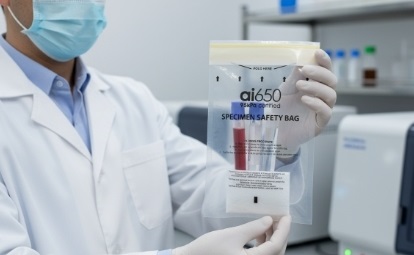What Are You Looking For?
What Are You Looking For?
When experts discuss the potential for a global pandemic in 2025, our attention often fixates on the virus itself, vaccine development, or national emergency response strategies. Yet in this invisible battle, there is an unassuming but critical player quietly safeguarding our safety—the 95kPa specimen bag.
You may have never heard its name, and it is far from a "high-tech product," but it is buying us precious time in the fight against future health crises.

In recent years, highly pathogenic avian influenza (HPAI)—particularly the H5N1 virus—has continued to spread globally, with rare cases of human infection reported. While large-scale human-to-human transmission has not yet occurred, scientists widely view it as a "ticking time bomb." If the virus mutates to gain the ability to spread efficiently between humans, a new global health crisis will become inevitable.
This is why every shipment of suspected avian influenza virus specimens—whether in labs or hospitals worldwide—must adhere to the highest safety standards.
The name "95kPa specimen bag" derives from a critical technical specification: it must withstand internal pressure of up to 95 kilopascals (kPa) without leaking.
Imagine a test tube containing a viral specimen, placed in the cargo hold of an airplane, being transported from one country to another. During takeoff, landing, and flight, air pressure fluctuates dramatically. Ordinary plastic bags or containers would likely rupture under such pressure differences. A specimen leak would not only contaminate the aircraft cargo hold but also expose transport personnel to infection risks.
The 95kPa specimen bag is specifically designed to address this challenge. It is durable and leak-proof, and usually equipped with an absorbent pad—even if the test tube inside breaks accidentally, the pad immediately soaks up the liquid, ensuring no virus escapes. It meets the strict regulations of the International Air Transport Association (IATA) and stands as the "gold standard" for the safe transport of Category B biological substances.
In the preparation for future pandemics, rapid response is key. This does not only refer to the speed of vaccine development but also the speed at which virologists worldwide share information and collaborate on research.
From suspicious specimens collected in remote villages to top-tier global genetic sequencing labs, these small specimen bags ensure the safe and efficient circulation of specimens. They deliver the virus’s "fingerprint"—its genetic sequence—to scientists intact. This invaluable information enables researchers to:
In the race against the virus, every safely transported specimen is a small step toward ultimate victory.
So, the next time you hear warnings about a global pandemic, remember: beyond scientists and healthcare workers, there are ordinary-seeming yet indispensable tools—like the 95kPa specimen bag—silently guarding our shared future.
What other unsung tools do you think play a critical role in safeguarding global public health? Please visit www.aicbiologicalbag.com